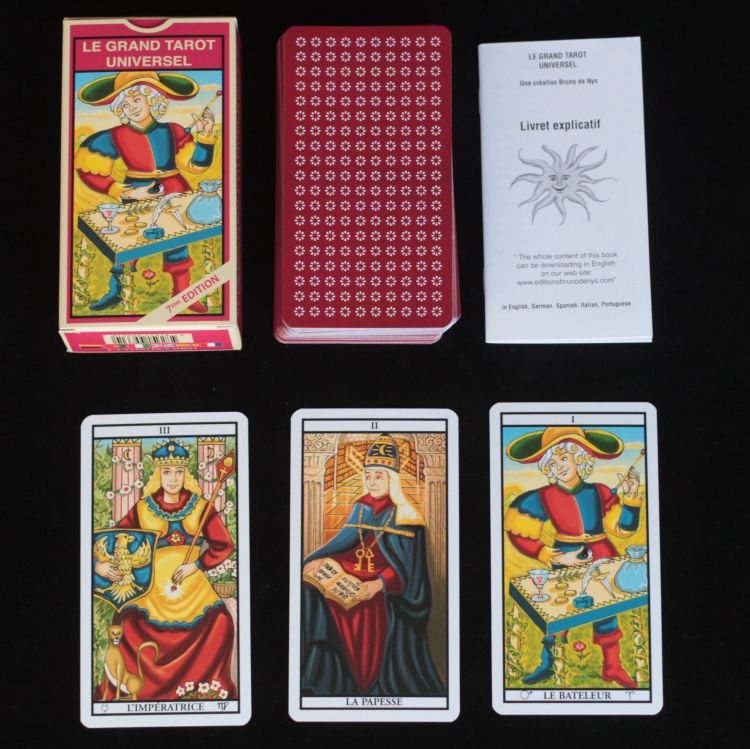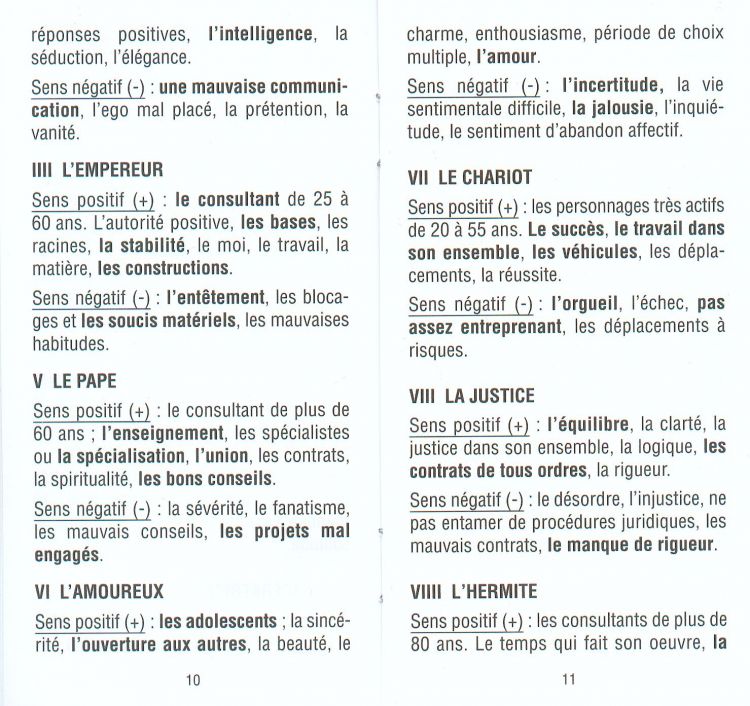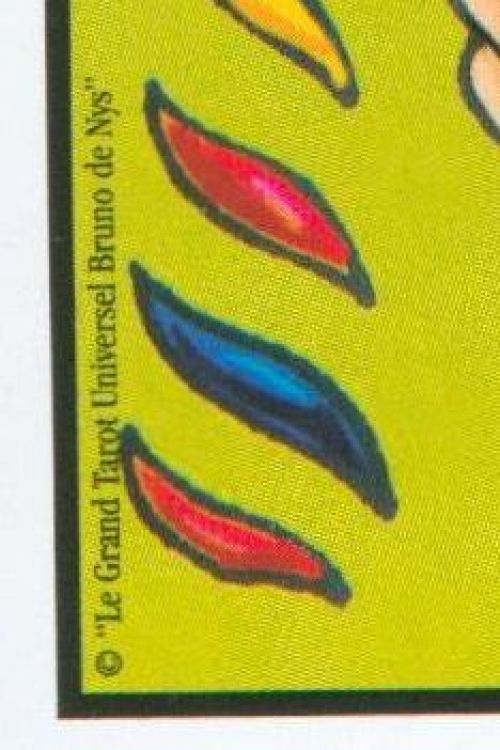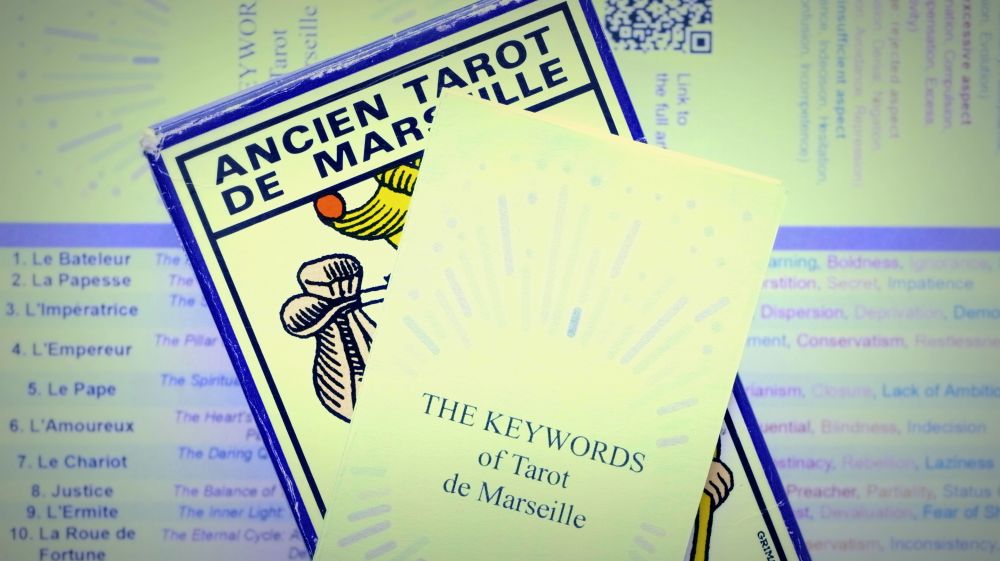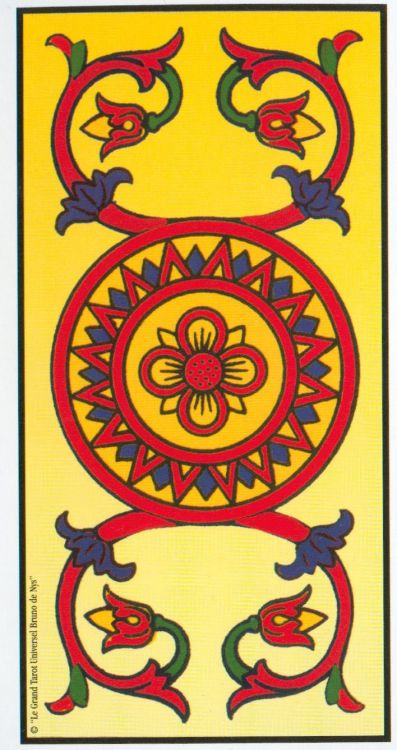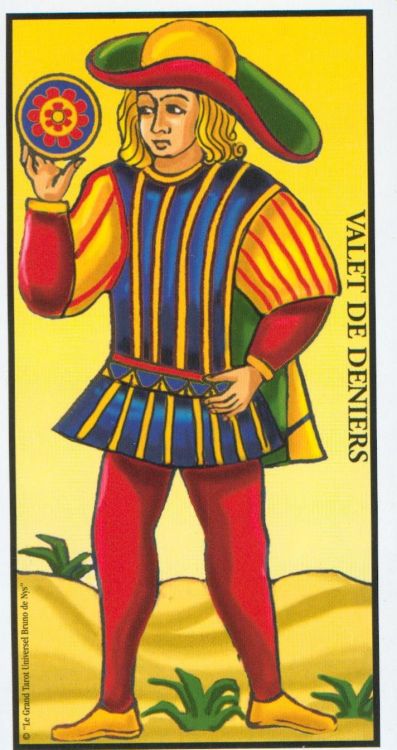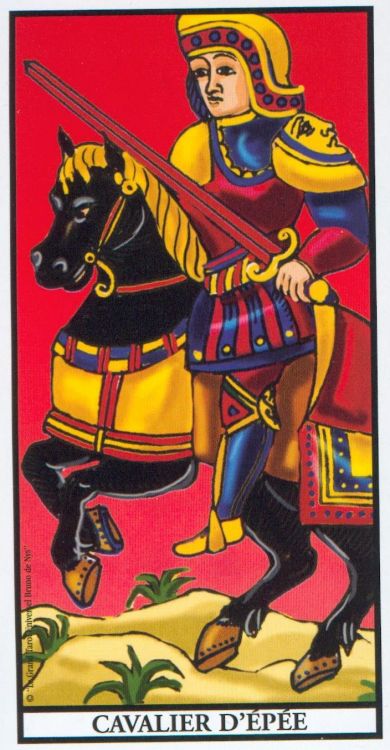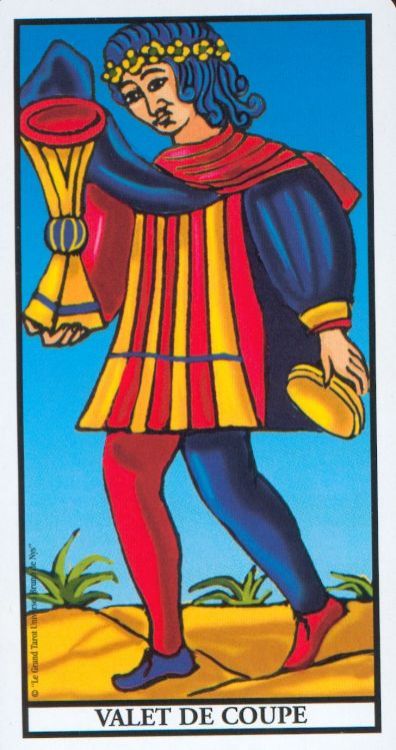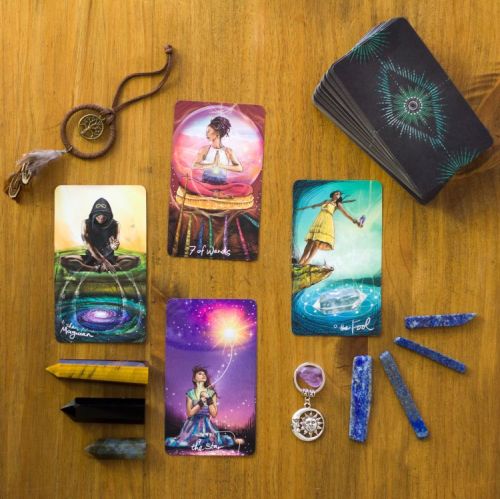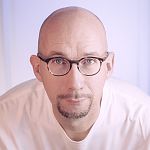I follow a process of democratization of the Tarot de Marseille, where the very medieval imagery of the deck is a real obstacle to its acquisition, in the face of unequal competition from RWS tarot derivatives with modern and superb graphics. I therefore salute the initiative of Bruno de Nys to modernize the appearance of the Tarot de Marseille. I intend that he took advantage of this opportunity to integrate personal additions to the canonical form. Who wouldn't have done so ?
However, for the move the Marseille's standard is no longer fully respected in his creation. And the author did not make in the half measure on his personalization of the cards.
The result is a Tarot de Marseille with very modern designs compared to the original medieval images. We can appreciate this new form. On the other hand, on the level of symbolism, the purists of the Tarot de Marseille will clearly regret the divergences from the standard and will be able to turn to the Fournier tarot (my review here). As for the beginners, there is in this game an abundance of symbols that can slow them down in learning how to read cards divinatory.
On the French card game market, most beginners clearly turn to a Rider-Waite-Smith tarot for their first deck. And more advanced practitioners will look for authentic Tarot de Marseille tarot cards by selecting historical facsimile or restored decks. We can therefore ask ourselves the question to whom tarot cards such as Bruno de Nys' "Le Grand tarot Universel" are really addressed. There is clearly a place for renovated and modernized Marseilles tarot cards. But such decks must shine by their excellence if they are to make a breakthrough in a market dominated by RWS tarot cards.
To learn more and deepen your knowledge of tarot, check out my article on the meanings of the 78 tarot cards or on the 22 Trumps (major arcana).
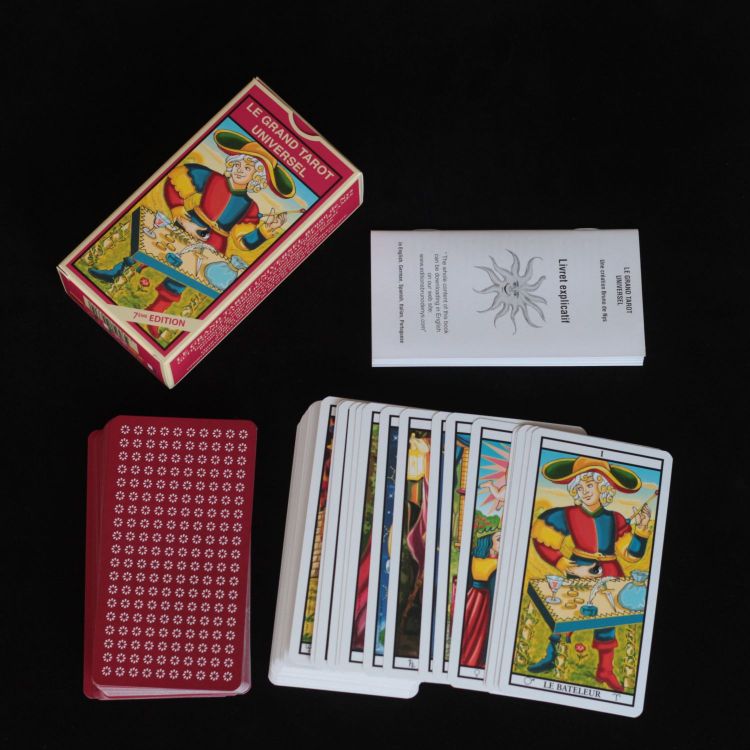
 Please note that this review is based on material and product in French. Depending on the edition you buy, the material could be identical, but also different on the packaging, the guidebook, the booklet, or the card stock . I'm sorry I can't systematically buy tarot cards and books in all editions (I don't receive gifts from publishers)! 😅
Please note that this review is based on material and product in French. Depending on the edition you buy, the material could be identical, but also different on the packaging, the guidebook, the booklet, or the card stock . I'm sorry I can't systematically buy tarot cards and books in all editions (I don't receive gifts from publishers)! 😅 